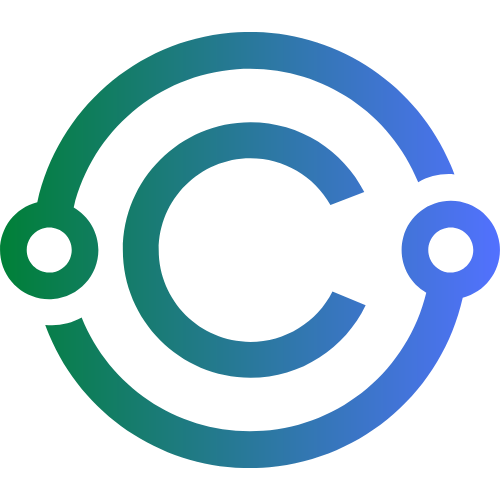How to Create a Job Search Routine That Gets Results

Job searching can quickly become a full-time job—without the paycheck. Between browsing job boards, tailoring resumes, prepping for interviews, and networking, it’s easy to feel overwhelmed and burned out. That’s where a job search routine comes in.
A structured, repeatable system turns chaos into clarity. It helps you stay focused, track progress, and avoid job-hunting fatigue.
In this post, we’ll show you:
- Why a job search routine is essential
- How to build a weekly schedule that fits your life
- What daily and weekly tasks to prioritize
- Tools to keep you organized
- A case study of someone who landed a job by sticking to a routine
Let’s help you get from “searching” to “hired”—efficiently.
1. Why You Need a Job Search Routine
✅ Reduces overwhelm – You know what to do each day
✅ Increases focus – You spend time on what matters (not scrolling endlessly)
✅ Builds consistency – Momentum leads to interviews
✅ Gives control back – You can measure progress and adjust quickly
Without a routine, your job search can feel random and discouraging. With one, it becomes a project you can manage—and win.
2. Start by Setting Your Weekly Job Search Goal
Before building a schedule, define your target:
- How many applications per week?
- How many networking outreaches?
- How many hours will you spend weekly?
Example Weekly Goal:
- Apply to 10 tailored roles
- Connect with 5 new people
- Spend 10 total hours on job search activities
Tip: Don’t set goals based only on volume—set goals around quality interactions too.
3. Break the Job Search Into Manageable Categories
Your job search involves different types of work. Here are the main categories to rotate through:
- Resume & LinkedIn optimization
- Researching companies
- Applying to jobs
- Networking and outreach
- Follow-ups and tracking
- Interview preparation
- Upskilling or certification
Now let’s plug them into a weekly routine.
4. Sample Weekly Job Search Routine (10 Hours a Week)
Monday (2 hours)
✅ Review job alerts + shortlist 5 jobs
✅ Tailor and apply to 2–3 jobs
✅ Log applications in tracker
Tuesday (1.5 hours)
✅ Research 2 target companies
✅ Follow their LinkedIn pages and recent news
✅ Engage with their content
Wednesday (1.5 hours)
✅ Reach out to 2 new connections
✅ Follow up with 1 existing contact
✅ Comment on 1–2 relevant LinkedIn posts
Thursday (2 hours)
✅ Apply to 2–3 more roles
✅ Update resume if needed
✅ Customize cover letters
Friday (1 hour)
✅ Prep for interviews (STAR stories, answers)
✅ Record mock interview on Interview Warmup
Saturday (1 hour)
✅ Reflect on the week: What worked, what didn’t?
✅ Update tracker and plan next week
✅ Watch one upskilling video/course
Sunday (Optional)
✅ Rest or batch-apply to Monday roles
5. Tools to Build and Maintain Your Routine
✅ Teal Job Tracker – Application + networking tracking
✅ Notion Job Dashboard – Customizable workspace
✅ Todoist – Daily checklist and goal tracking
✅ Calendly – Schedule networking chats with ease
✅ Clockify – Time tracking for job search hours
6. What to Prioritize Daily (If You Have Less Time)
Even if you only have 1 hour a day, try this:
Day 1: Apply to 2 jobs
Day 2: Follow up with 1 application + message 1 new person
Day 3: Optimize LinkedIn + engage with 1 post
Day 4: Practice 1 interview question + research a company
Day 5: Apply to 2 more jobs + reflect on weekly progress
Doing small, meaningful tasks daily beats a binge-then-burnout approach.
7. Automate and Batch When Possible
✅ Set daily job alerts via LinkedIn, Otta, and Wellfound
✅ Use resume templates to reduce tailoring time
✅ Save messaging templates for networking and follow-ups
Example Follow-Up Template:
Hi [Name], just following up on my application for the [Job Title] role at [Company]. I’m very excited about the opportunity and happy to provide any additional info. Thanks again!
8. Case Study: How Jaya’s 30-Minute-a-Day Routine Landed Her a Job in 6 Weeks
Background: Jaya, an operations associate from the UK, was juggling job hunting and full-time work.
What she did:
- Blocked 30 minutes daily after work for job search
- Created a Notion dashboard to track goals
- Prioritized quality over quantity (10 customized applications/week)
- Connected with 3–5 people weekly
Result: 3 interviews by week 4, job offer by week 6.
Takeaway: You don’t need 8-hour search days. You need structure.
9. When to Adjust Your Routine
✅ You’re getting interviews but no offers → focus on interview prep
✅ You’re not getting any interviews → revisit your resume/strategy
✅ You feel overwhelmed → reduce volume, increase intention
Every week, ask:
- What activity gave the best results?
- What wasted time?
- What should I stop/start/continue?
10. Final Thoughts: Job Search Success Is a Daily Habit
The difference between job seekers who land offers and those who burn out often comes down to consistency.
By building a routine, you:
- Take control of your progress
- Use your time efficiently
- Stay positive and focused
Start small. Track your wins. Build the habit.
And remember: the right routine turns chaos into offers.
More from UJ+:
- The 30-Day Job Search Plan: Land Interviews Fast
- Follow-Up Emails That Get You Hired
- Why You’re Not Hearing Back—And How to Fix It
Subscribe to UJ+ for job search tools, templates, and strategies that work in real life.

